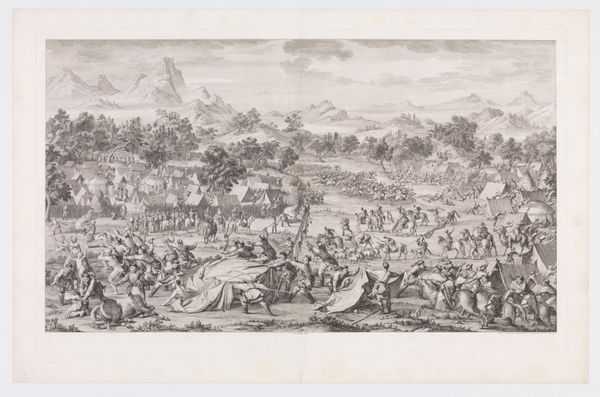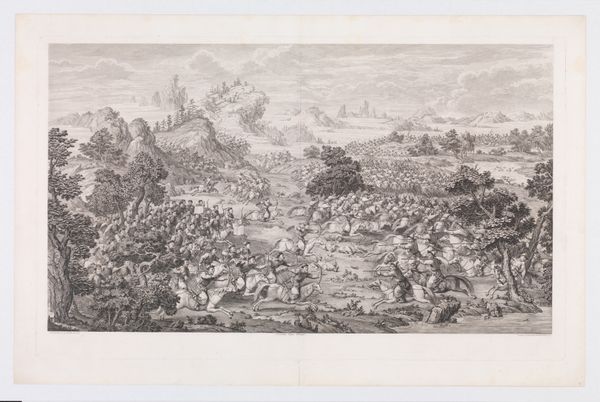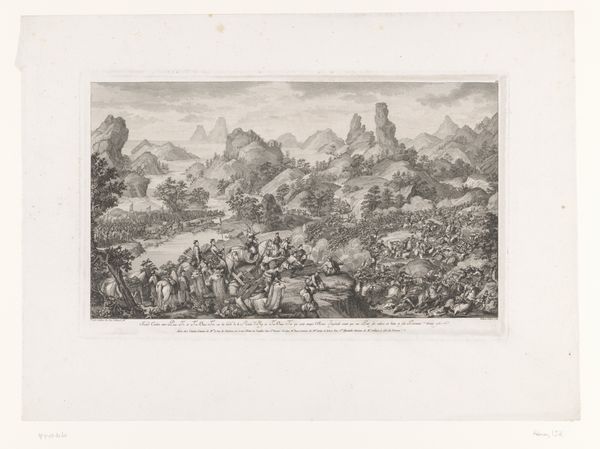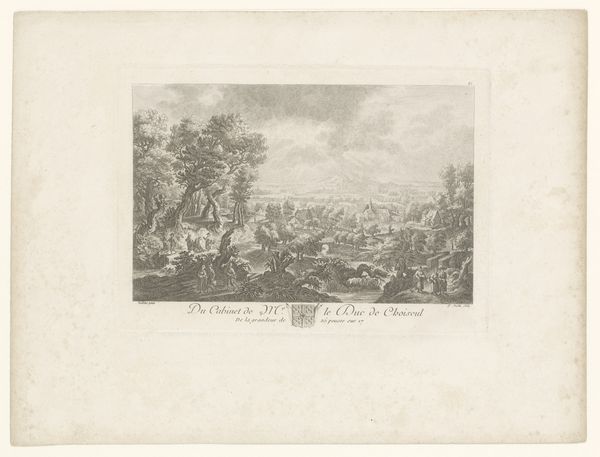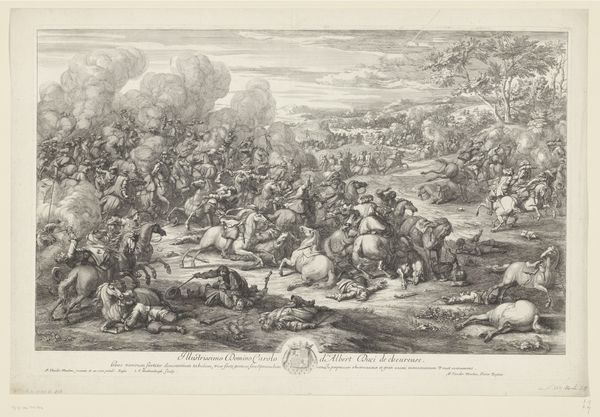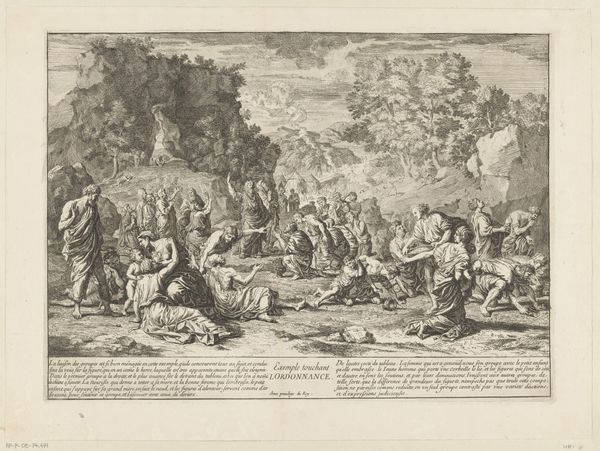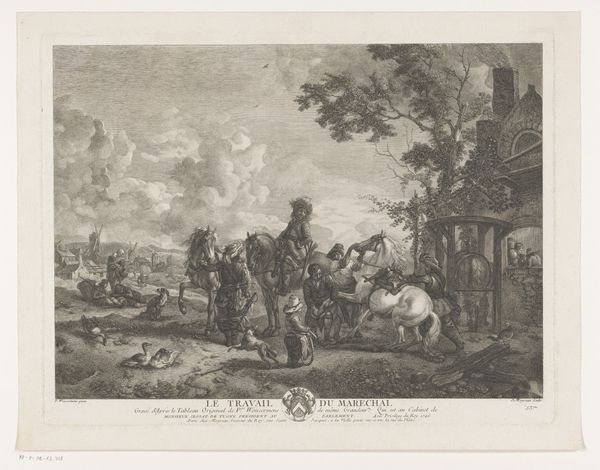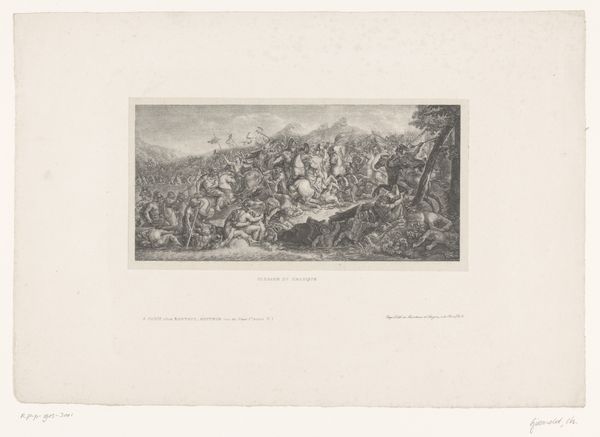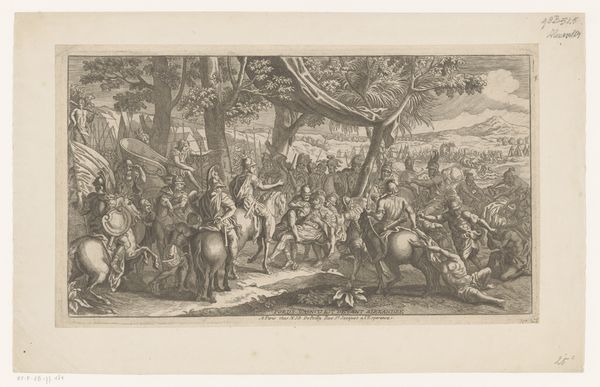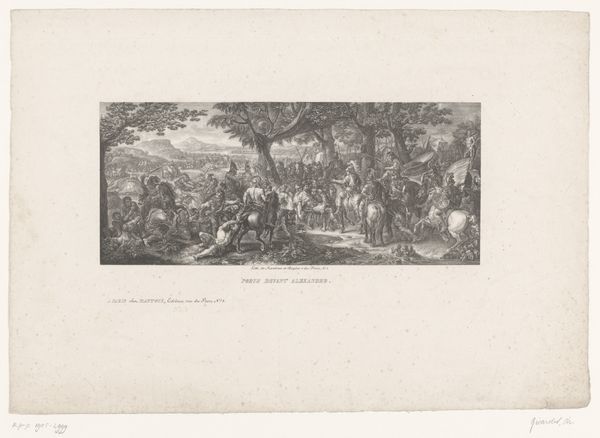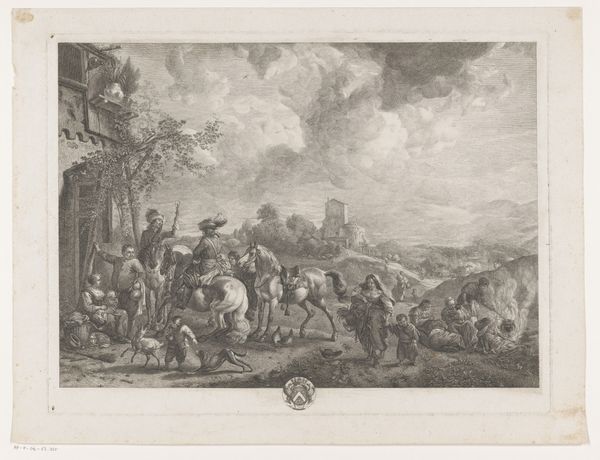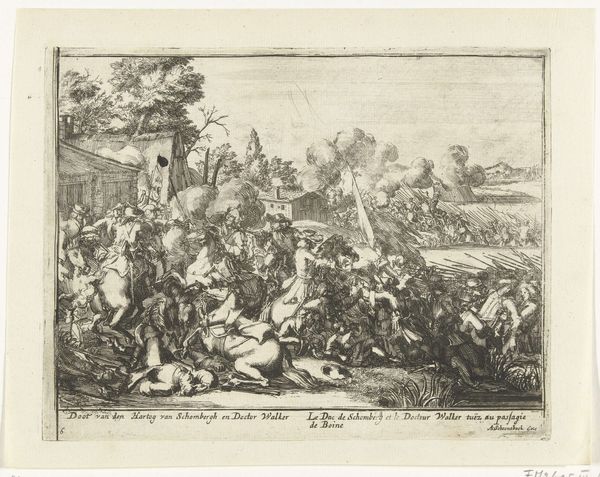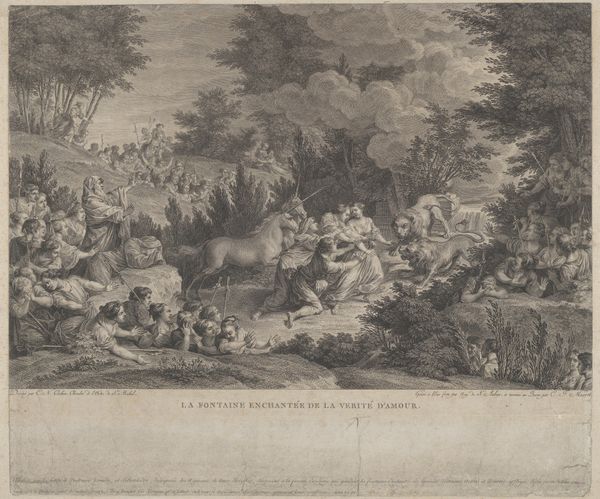
Slag van Oroi-Jalutu in 1758 en de vernietiging van het vijandige kamp 1783 - 1785
0:00
0:00
isidorestanislashelman
Rijksmuseum
print, engraving
#
ink paper printed
# print
#
old engraving style
#
landscape
#
pencil drawing
#
history-painting
#
remaining negative space
#
engraving
Dimensions: height 269 mm, width 431 mm
Copyright: Rijks Museum: Open Domain
Editor: So, this engraving is "Slag van Oroi-Jalutu in 1758 en de vernietiging van het vijandige kamp" created between 1783 and 1785 by Isidore-Stanislas Helman. It depicts a battle scene with incredible detail, almost like a complex tapestry woven from tiny figures and landscapes. It's astonishing what they could achieve with ink, paper, and print! What do you see when you look at this piece? Curator: The remarkable detail invites us to consider the labor involved in its production. Think about the artisan meticulously etching the metal plate, reproducing this image for a wider audience. How does the act of creating this print – this reproducible medium – democratize access to depictions of warfare and conquest? What sort of industry was required to make this level of detailed line engraving possible? Editor: That's interesting! I was focusing on the subject matter - the battle itself - but thinking about the work involved in making the print really changes my perspective. It was reproduced. Curator: Precisely. This isn't a unique oil painting displayed for the elite. It is part of an expanding print market, indicative of evolving modes of production and consumption. Consider how the availability of prints like these influenced public perception and nationalistic fervor. How might repeated imagery of victorious battles influence ideas around colonialism? Editor: I hadn't considered that! It becomes more than just a historical record. What does that say about the intention of the artist, or perhaps the patron, in creating something reproducible like this? Curator: Exactly. We can consider the power dynamics at play. Who commissioned it? Who consumed it? These questions lead us to a deeper understanding of its historical significance beyond simply the event it portrays. Editor: That definitely provides another lens through which to view it, thank you. Curator: My pleasure, by examining the materials and context of production, we discover the work's layered significance.
Comments
No comments
Be the first to comment and join the conversation on the ultimate creative platform.
